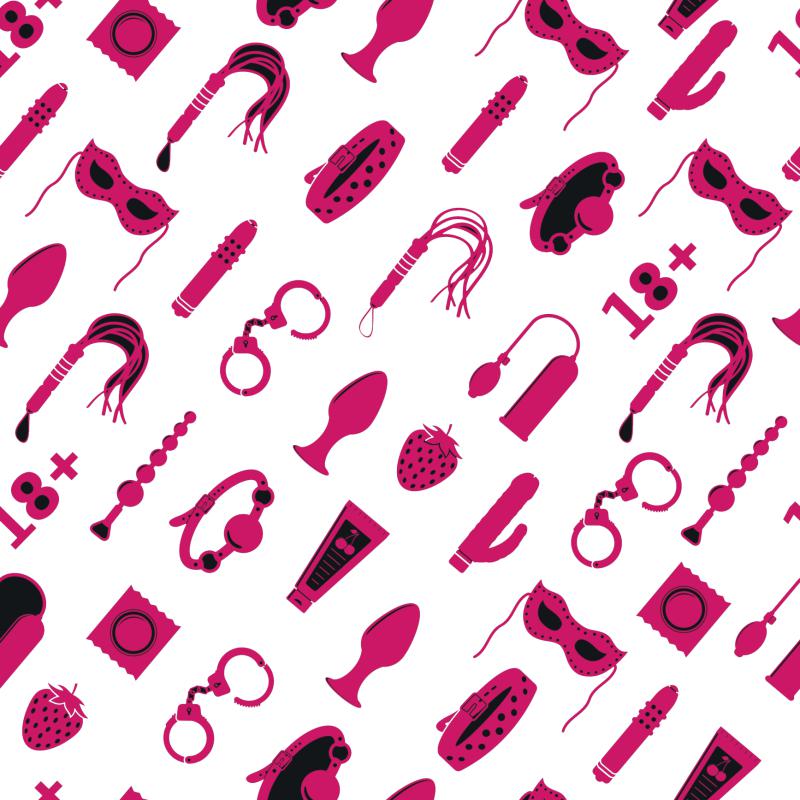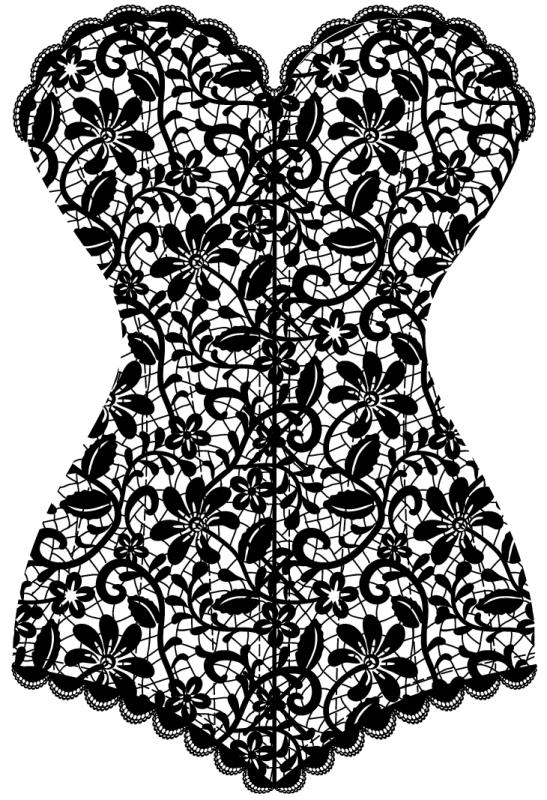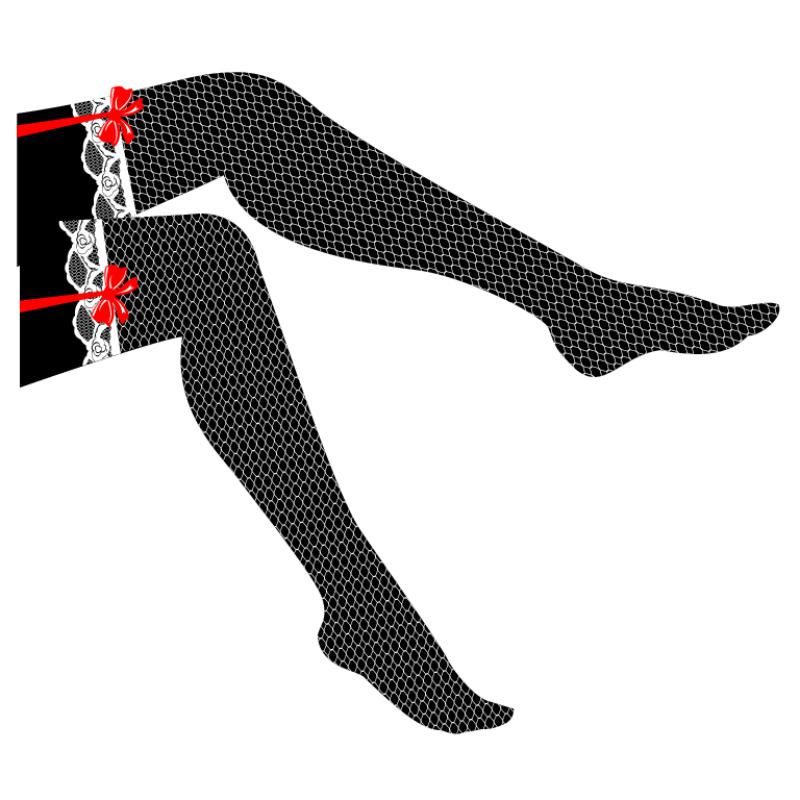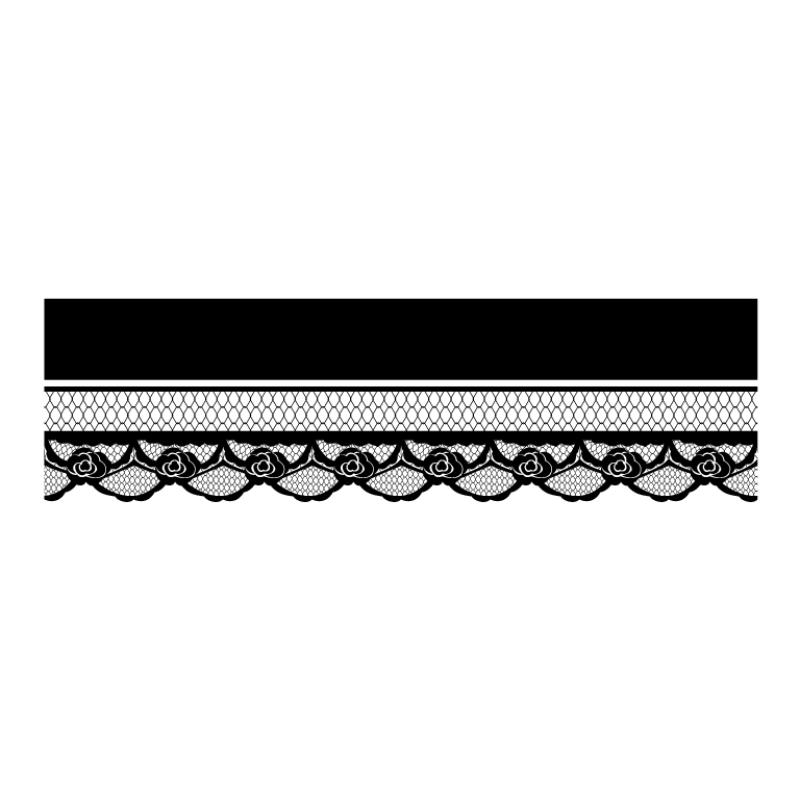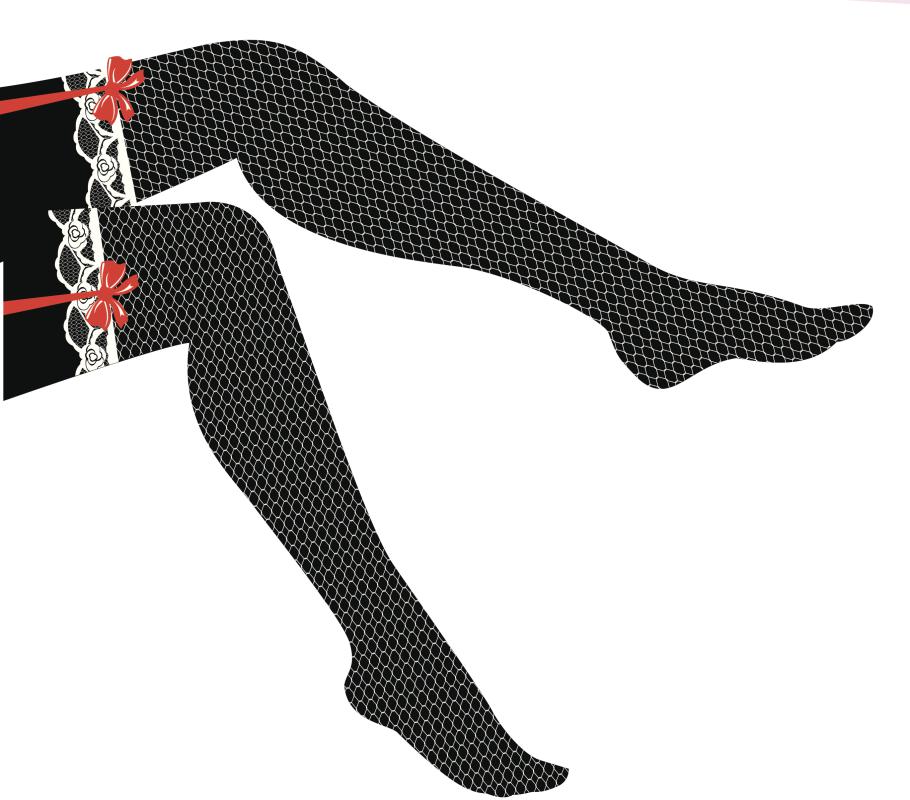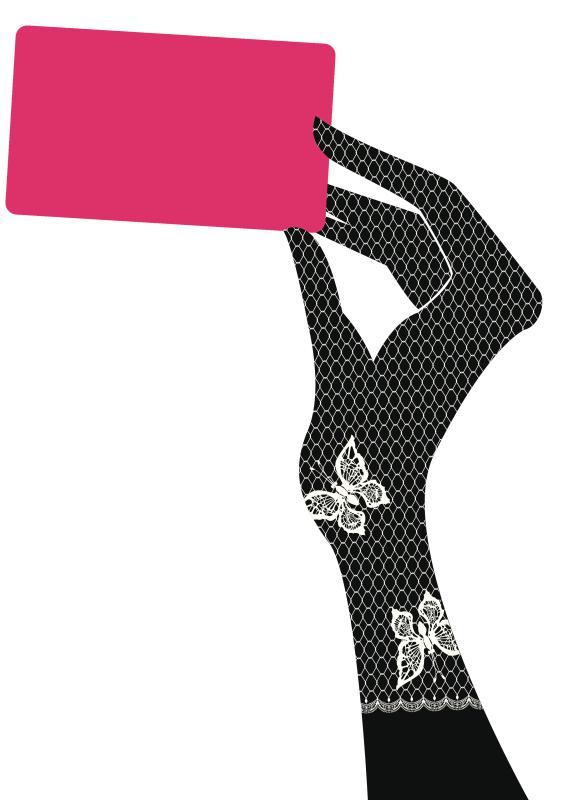Sex has been around since day one, and it’s still evolving.
Just over the past 50 or 60 years, getting down has changed significantly. Influenced by popular culture and social mores, sex has become a more liberated and experimental experience since the 1950s. With a decrease in stigma and a society more willing to talk about it, all kinds of sex encounters are on the table — or in the bedroom, bathroom, outside, upside down, whatever — as long as people are willing to conversate and try.
If you’re still stuck in the missionary position, it’s time for change. Check out our top ways sex has changed over the past half-century.
Sex symbols
The qualities of what makes a sex symbol are always evolving — and people are always trying to keep up. Body modification is older than foot-binding, though it’s often not as drastic. Dieting and working out are some of the most common ways people to seek to make themselves feel more attractive.
Over the last 50 years, women sex symbols have gone from voluptuous and perfectly coiffed Marilyn Monroe and Ann-Margret to skinny, shaggy-haired Farrah Fawcett and Raquel Welch. The ’80s and ’90s brought in an era of big hair and big breasts enhanced with silicone.
“There’s fads,” says Robert Grunberg, owner of Bookends, an adult video and novelty store in Enfield, Connecticut, that has been around for 40 years. “What people find sexy is definitely influenced by pop culture.”
The aughts have kept its sex symbols skinny, but ditched the half-moon look of giant implants. And while breasts will always be popular, there’s no denying the ass is having a moment right now.
“It used to be big boobs, everything was about the boobs. But this year, now, it seems to be all about big butts, and that’s probably because of people like Kim Kardashian,” says Grunberg.
Male sex symbols have undergone a shift, too, though not so much in the body. In the ’50s and ’60s there was a single type of male sex symbol: white with a square jaw and a clean shave; trim, motionless hair; and a suit. That all went out the door when James Dean came on the scene with his long (for the time) blonde hair and tight white T. The door was open for all types of steely-eyed hairy men to take the sex symbol mantle. In the ’70s and ’80s, Clint Eastwood, Tom Selleck, and Warren Beatty made untamed hair on top, popping out of a V-neck, or above the lip, hot.
“In our culture, being yourself is more acceptable than it was. People aren’t just trying to be something from an image in a magazine,” says Bookends manager Nicole Gaylord.
The ’90s brought more diversity in sex symbols with men like Wesley Snipes and Julio Iglesias steaming up the scene. The ’90s and early 2000s also ushered in an era of men with softer facial features like Leonardo DiCaprio and Brad Pitt. Men also became more interested in creating their own style, and the metrosexual was born. This trend carries on today with the appealing likes of Ryan Gosling and the rise of dad-bod, the not-quite toned and groomed look.
A changing pornscape
It is a truth universally acknowledged that “if it exists, there is porn of it.” That’s Rule 34 of 4chan’s “Rules of the Internet,” and we are rather stunned to report that it is true (always, always be careful what you Google, dear readers).
The ubiquity of free porn, combined with the stringent restrictions on sex and nudity on social media platforms, led Playboy to the decision this past fall to eliminate nudity from its magazines beginning this month (the first non-nude Playboy hit newsstands this past Thursday).
“Don’t get me wrong,” Playboy editor Cory Jones told The New York Times in October, “12-year-old me is very disappointed in current me. But it’s the right thing to do.”
I haven’t looked at a Playboy in years, let alone visited playboy.com, but I still felt wistful visiting the company’s website this week in search of interesting content. One of the first things I saw — a pop-up ad for the 2016 Dodge Viper — was simply a block of text that read: “We would show you a sexy car, but some of us are here for the articles.”
Good thing Playboy, which has been a worthy outlet for longform nonfiction and reporting for decades, still publishes some interesting features. And now more than ever, the site also carries short Buzzfeed-esque articles engineered for optimum retweeting and Facebook sharing, plus photo galleries of women posing in sexy underwear.
Hugh Hefner’s rather dated institution is feeling its way into newly strange, self-aware times. You can tell from the headline of one of the site’s most popular photo galleries: “For Some Reason, Eva Fahler Wears Bikinis While Playing Tennis and Underwear While Bathing.”
Shhh! Don’t say the ‘s’ word
We may be more open than ever when it comes to discussing sex, but still some moments call for sexual sugar-coating. Here are some sex euphemisms for the ages:
Making whoopee
Knocking boots
Rolling in the hay
Horizontal refreshment
Shaking the sheets
Amorous congress
Sweeping the chimney
Buttering the biscuit
Burping the worm in the mole hole
Playing with the box the kid came in
Making the beast with two backs
Getting one’s Twinkie stinky
Paddling up Coochie Creek
Playing hide the cannoli
Feeding the kitty
Rocking n’ rolling
Two-person push ups
Taking Grandma to Applebee’s
Opening the gates of Mordor
Putting the email in the spam folder
The enthusiastic YES
Let’s start with a subject related to our woefully inadequate sex education: consent. In order for us to finally make significant strides against rape and sexual assault, we have to start teaching young people healthy ways to initiate sex.
Should it start with a contract? Antioch College was mocked after initiating a policy in 1991 that required students to formalize their sexual permissions process via ongoing verbal affirmations for each new level of sex throughout the act. No one’s making fun of them now, with sexual assault a continuing problem, especially on college campuses.
Though Antioch pioneered that concept of consent about 25 years ago, we’re still just grasping the topic (with due mutual permissions, of course), because no one’s really teaching kids, yet, how to accomplish that — at least not in a standardized way.
“If you look at the college scene,” says Carol Gesell, who runs Oh My! Sensuality Shop in Northampton with her daughter Beth, “it’s sort of that peek in the window that says things haven’t changed that much.”
Gesell says that teaching kids consent has to start when we show our young children how to manage affection. She recalls one recent interaction with her granddaughter — who expressed clearly that she didn’t want to hug or kiss her — that provided Gesell an epiphany on the topic.
“I said, ‘I’m gonna kiss you all over’ and did the typical grandma thing, and it dawned on me that consent started right then and there,” Gesell says. “Clearly I was not paying attention, and I think if we start there and really listen, a whole lot of terrible things will stop at that point and [children] might feel empowered to say no and we might, possibly, see less sexual abuse.”
Laura Lovett, a UMass historian currently teaching the university’s first Sex in History course, says conversations around consent emerged with the women’s movement during the ’60s and have crawled slowly forward ever since. The “no means no” movement of the ’90s led us up to the consent movement of today, which is a push towards not only respecting the no but achieving an enthusiastic affirmative.
“It’s relatively brand-new that we’re moving from ‘no means no’ to ‘wait for the yes,’” says Lovett.
Gesell says issues surrounding consent persist because of the “dumbfounding” lack of education, and Lovett points out how drastically different sex ed can be, even between neighboring high schools, because of the virtual lack of standardization.
“It does suggest you have a body of young people who may or may not speak the same language in terms of sex,” says Lovett, who adds that she was outraged when a few years ago her daughter, then in fifth grade, was shown a movie made in 1987 as a method educators in her New Hampshire school were using to teach students about AIDS. “And consent is this whole other field we’ve just started to address — we’re only at the starting point.”
Toys (what’s life without playtime?)
Can you imagine what Johnny Carson would have done with the Twerking Butt — a disembodied robot booty that Valley butt guys can penetrate for the price of $899 at Adam and Eve? Maybe we don’t want to imagine what he would have done with it in private, but in public Carson likely would have made a laughingstock of it, like anyone else would have in the ’60s. But now, with twerking a prized talent and sex toys increasingly in demand, the whole premise seems genius (if not mildly disturbing). Its flesh-like “cyberskin” is heated to a human 98.6 degrees, and it moves in a disembodied booty-like fashion to beats of its owner’s choosing.
“What a time to be alive,” writes Maxim columnist Gabriella Paiella.
Carol Gesell, who’s been in the sex toy business about 20 years, recalls a time when at parties she would need to separate guests in order to help them find the sex toys they wanted. In groups, she says, stigmas were more contagious. Now, however, that’s not the case. “The stigma is much less than ever,” says Gesell. “I see a lot more people open to trying sex toys — they don’t seem so intimidated by them.”
People also seem to be less intimidated by the butt stuff, Gesell says, as evidenced by the $90 butt plugs that are flying off the shelves. That, to her, means “people are exploring it.”
Additionally, she says, straight men are appearing increasingly comfortable with the notion that, since the male G spot is in the anus, some play is in order.
“Even if I hear ‘oh no I’m not going to do that,’ it doesn’t seem like it’s a period at the end of that sentence,” says Gesell. “We’re seeing more women buying harnesses for their male partners — there’s an interest in that.”
She’s also seeing an increase in older people coming in for dilator kits that fight vaginal atrophy and butt plugs and cock rings that combat erectile issues. “I’m seeing more elders come in and even if they’re very intimidated, they’re saying, ‘you know, I’m not dead yet,’” Gesell says. “And I have some of my best conversations with these folks.”
The Hitachi Magic Wand, says Gesell, is a big hit at the shop. Though the so-called personal massager is sleeker than its original, it was born in 1968. “That can be used by anyone,” she says. “The Pope could use it, it’s so clean.”
In general, she says, the toys themselves “are getting more and more beautifully designed,” and more attention is being paid to practical aspects like rechargable, chemical-free parts. “They’re pricey,” she says, adding that beginners should start off with a cheaper model before investing in a top-shelf item. “But we’re starting to see some of the prices go down.”
Robert Grunberg, owner of Bookends in Enfield, also observed the sex toy evolution.
The Womanizer, says Grunberg, is a brand new sex toy that’s been very popular in recent months. It mimics the sensation of cunnilingus and doesn’t require batteries.
“Back in the day everything was hard plastic,” he says. “A lot of toys now you can control from your phone. They’ve gotten really high tech over the years.”
The Vibe, says Gesell, is a great way to get your feet wet. “It’s $10 and it’s heavy and metal,” she says. “It’s pure and it’s basic and it’s simple. And it really helps you to, well, squirt.”
Rope and lube, she says, have also been very popular at the store.
Leather and lace
In some ways, what women wear to stimulate their partners in the bedroom hasn’t changed much since the ’50s.
“Nothing is always popular,” Grunberg says.
But when women do make a purchase, what they’re looking for has come a long way from the conservative ’50s when a silky, flowing, short dress was the go-to bedroom garb. Lingerie is largely influenced by culture.
In the ’50s, the women wore negligees. In the indulgent ’80s, women wore lace and silk. As the country has become more liberal, so has bedroom wear. The sexual revolution and the women’s movement of the ’60s and ’70s took women’s sexy-time fashion in a completely different direction with smooth and sheer bra and underwear sets that covered more than the typical beach bikini of today. In the ’80s, women were looking for a little more design and frill. The lace teddy became a staple of many women’s top bureau drawers.
Today, lingerie is all over the place, Bookends manager Nicole Gaylord says. Latex, straps, lace, leather, silk, paint, whatever gets a person(s) hot is the order of the day.
“Women don’t have to be really skinny or this and that to be sexy. There used to be more pressure for that. Women are more comfortable with themselves and their bodies. So they’re choosing lingerie — lace, fishnets, whatever — to feel sexy, to go with their body type. So, we’re seeing more women coming in and buying stuff for themselves.”
Mates n’ dates
Every generation pushes against former boundaries when it comes to partnering. Straight, queer, and LGBT groups of friends, lovers, and (sometimes) couples have an easier time than ever connecting to form monogamous, polyamorous, and open relationships (thanks, internet).
More broadly, though, we may be getting better at talking openly and honestly about the differences between love and sex, which are less bound up together than ever. “I am a believer that you can have the best, hottest fucking sex and not be in love,” says Gesell. “I think we’re sold a bill of goods that love and sex go together — and then of course there’s the ‘M’ word.”
Gesell is referring to marriage (which she’s tried twice). True, it’s not for everybody. But even non-monogamous partnerships rely, ultimately, on communication and trust. Lately, Gesell has seen “more elders” interested in the products Oh My! sells, partly because “sickness, depression, and medications that affect people later in life can lower libido.”
When we ask Lillian Moss, the store manager at Adam & Eve in Greenfield, which types of partners she doesn’t see enough of at sex stores, she responds right away: “Busy people in their 30s and 40s.” Why? “Because they have kids, they aren’t satisfied with their sex lives, and life seems too crazy to get back a happy and active sex life. But that thinking can become habit, and without intimate connection, marriages crumble. It doesn’t have to be that way.”
The book of acts
Has anyone ever really, truly invented a new sex act? It seems unlikely. We’ve been a freaky bunch ever since we were apes. And over time, pop culture presumptions about fulfilling sex positions and acts tend to become ho-hum.
Gaylord points to bondage as one newly mainstreamed type of sexualized play. “Before it was too taboo, and people were really embarrassed,” she says. “But now that the culture has changed, they’re not. You see this stuff on TV shows and hear about it on the radio.”
The 50 Shades of Grey phenomenon brought a lot of fresh visibility to bondage and BDSM, says Moss. “The fact that it was in the downtown movie theatre — even in the ’90s that wouldn’t have been possible.”
Gesell is less than enthusiastic about 50 Shades. “Grey did it wrong, but it got women thinking more about: hey, I like my nipples pinched harder.”
Just as interesting to Gesell is the shift toward more anal play. “Straight men have become less closed to the idea,” she says. “I’m seeing more women buying harnesses for their male partners. Anal sex in general — we sell a lot of butt plugs for $80 or $90, and you don’t just pick that up willy-nilly.”
Still, Gesell thinks the bedroom “hasn’t become as progressive as we might think.”
But times are changing when, as Moss describes it, “I had this old lady come in and say: ‘I want to do my guy in the butt — just show me what to use.’”
Gettin’ kinky with it
The future is looking good for Agreeable Agony, a collective of local crafters that sells BDSM and kink gear including bondage rope, floggers, and wax play candles. The group’s mastermind and head salesperson, who identifies only as “K,” says production is scaling up, and the group is vending at kink conferences around the country. Agreeable Agony sells at Oh My!, but also online and at stores in Boston, Chicago, and Minneapolis.
Does this mean that everyone is becoming more kinky and adventurous? Or simply that kink gets more media coverage and exposure than it used to?
A little of both, says K. “We were a quiet, underground, close-knit community 20 years ago. People would try kinky things at home, but it wasn’t a public identity. There’s a lot more awareness, knowledge, and public events than there used to be.”
One big benefit to changing perceptions, adds K, is that people feel less afraid than they used to about being labeled “not kinky enough” when connecting with members of fetish groups.
“People feel emboldened to talk to their partners earlier in relationships,” K says. “That’s positive. It’s better to know right away than to date for five years before finding out your partner wants something you find disturbing.”
Over time, some kinks come to seem tame. Writer Dan Savage once quipped that handcuffs, for example, are no longer kinky at all. But we live in an age when mass media can connect the person who has a truly unique kink — “maybe a purple unicorn fetish?” offers K — with that other person out there who understands.
“That’s all pretty new, these past few years,” K says. “It’s great. You’ve gone from looking at photos of people tied up to meeting a whole community of people who can really show you how to do it.”•



